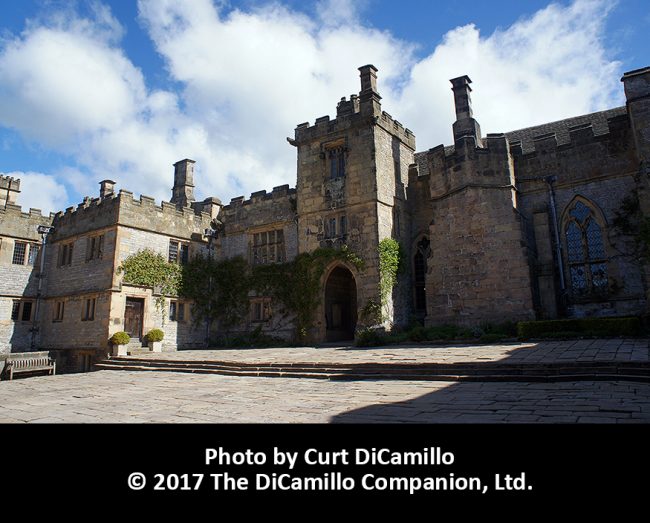
The entrance courtyard
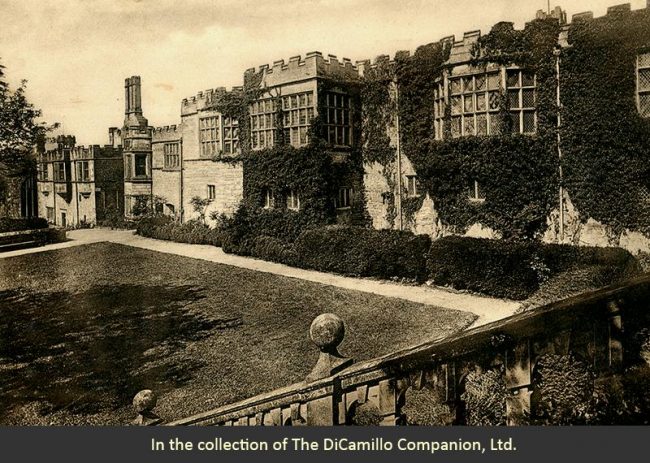
The house from the terrace from an early 20th century postcard
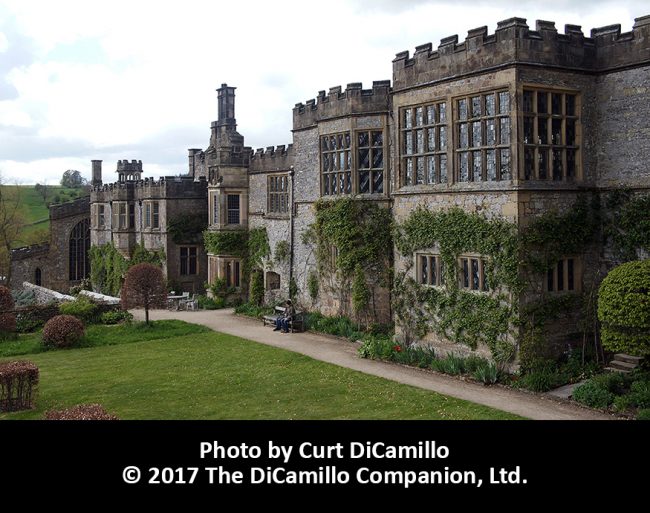
The house from the garden
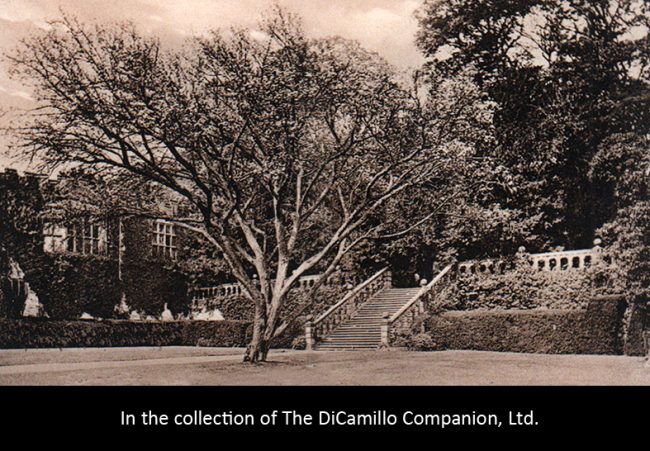
The house from the garden from an early 20th century postcard
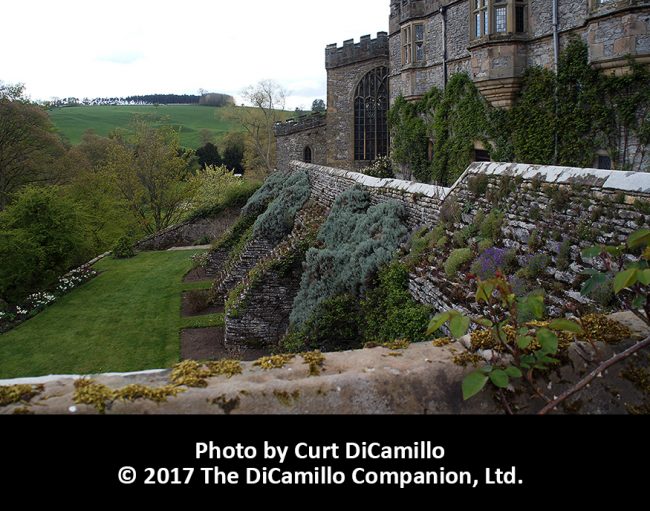
The house from the garden
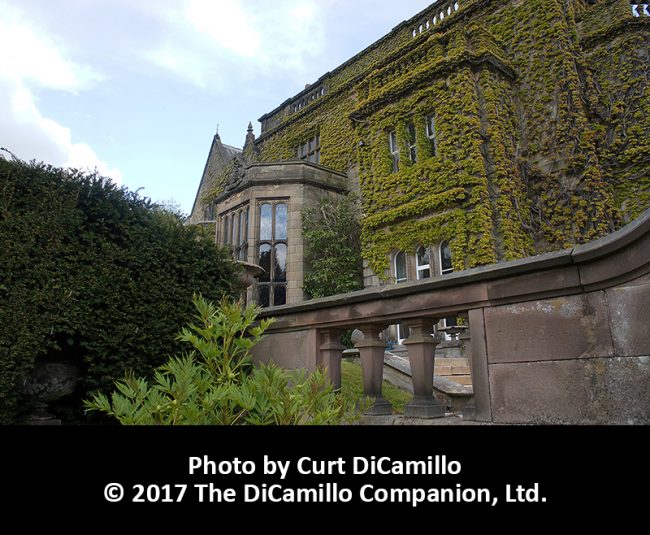
The house from the garden
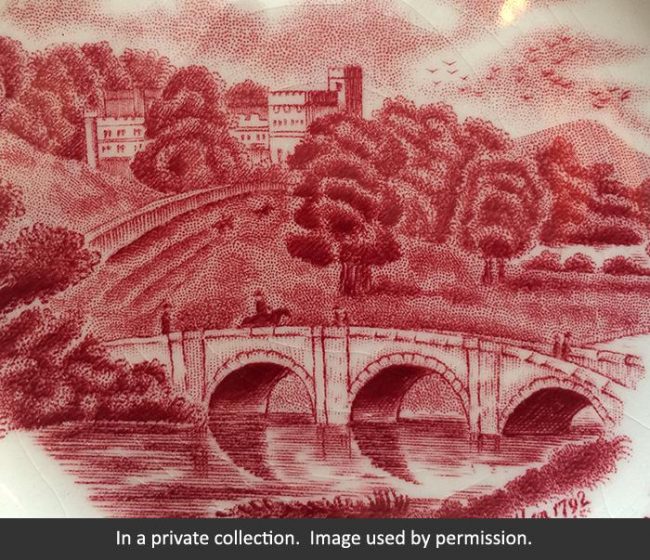
The house from a circa 1950s Johnson Brothers plate from the Old Britain Castles in 1792 series
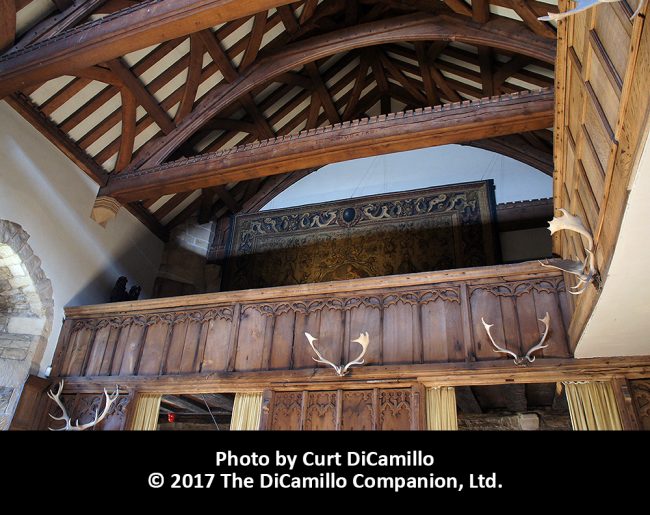
The great hall
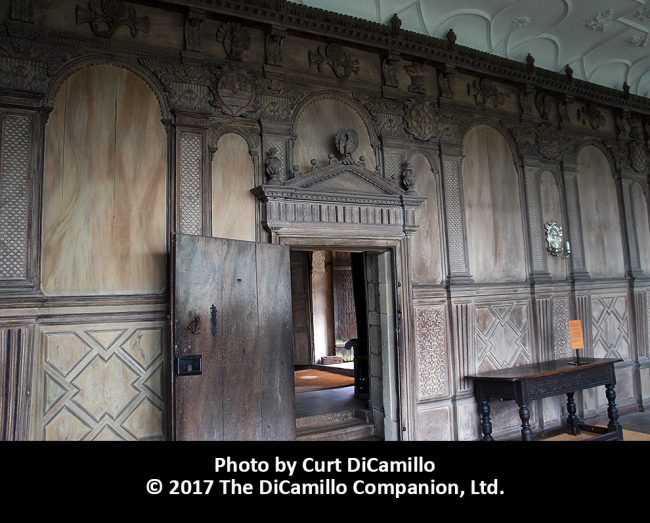
The long gallery
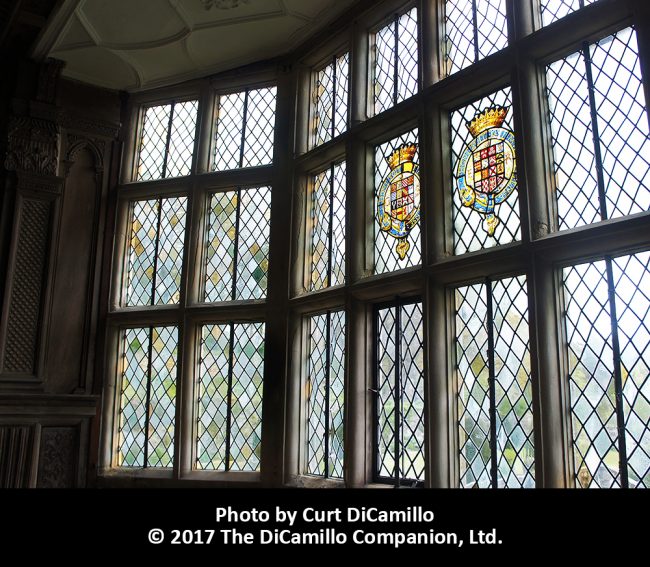
Window in the long gallery
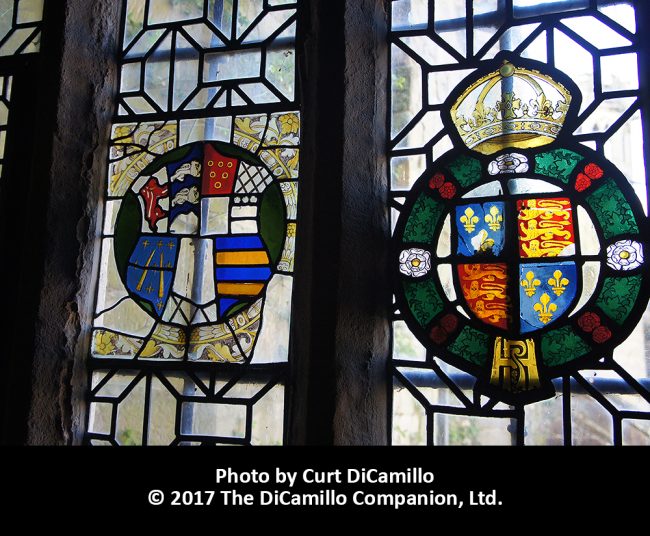
Window in the long gallery
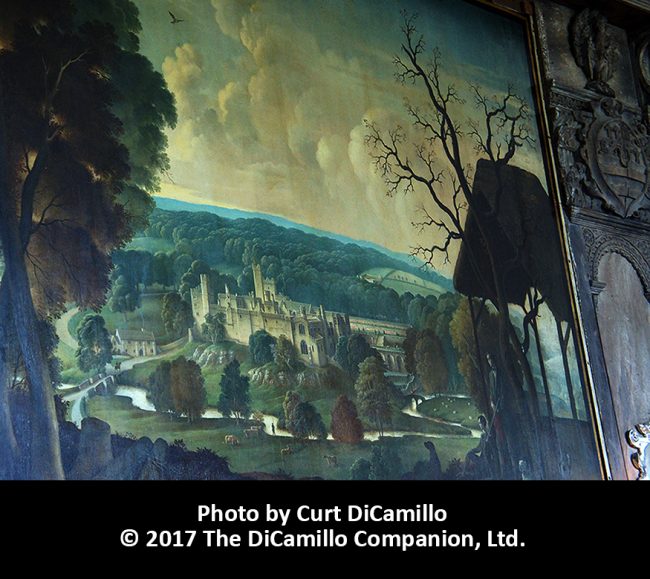
Rex Whistler's early 20th century painting of Haddon Hall hanging in the long gallery
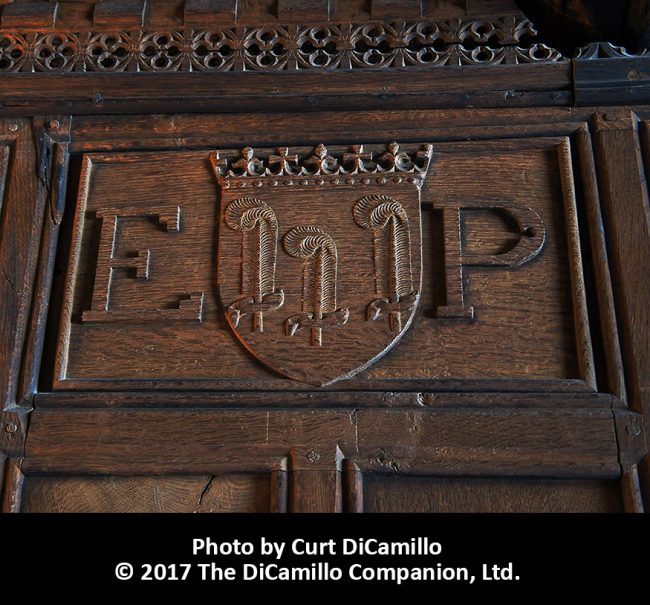
The carved arms of Edward, Prince Wales, later Edward VI, in the parlour.
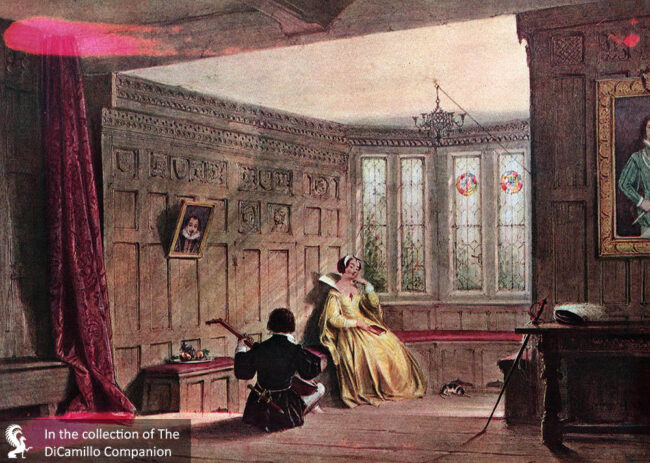
A late 19th century lithograph of the dining room from Joseph Nash's "Interiors of Old English Mansions"
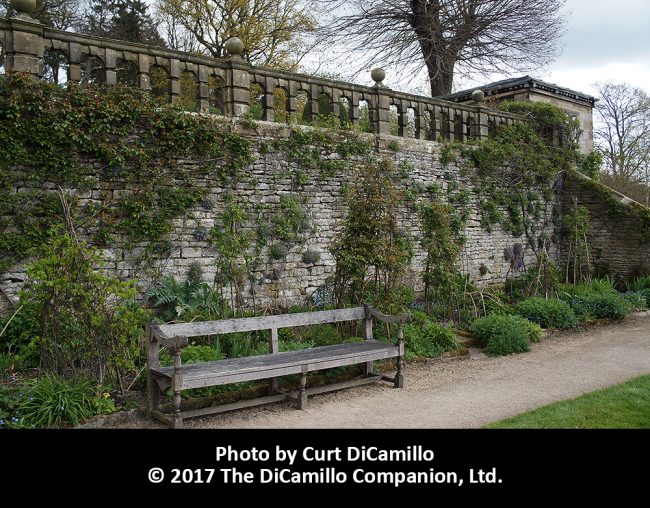
Garden wall
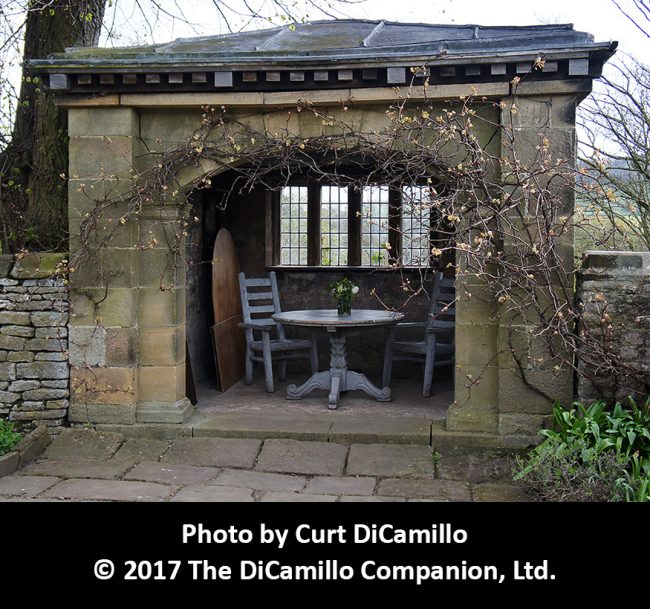
Garden folly
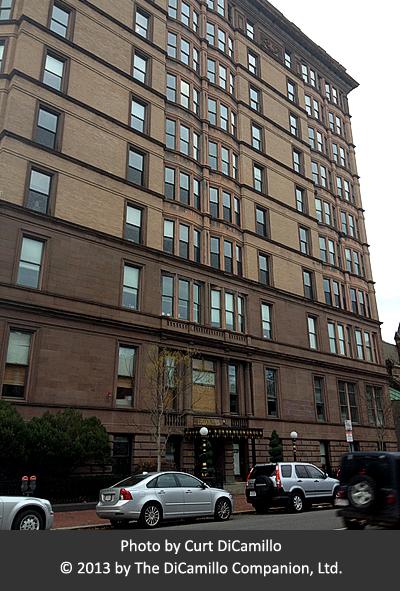
Haddon Hall apartment block in the Back Bay section of Boston
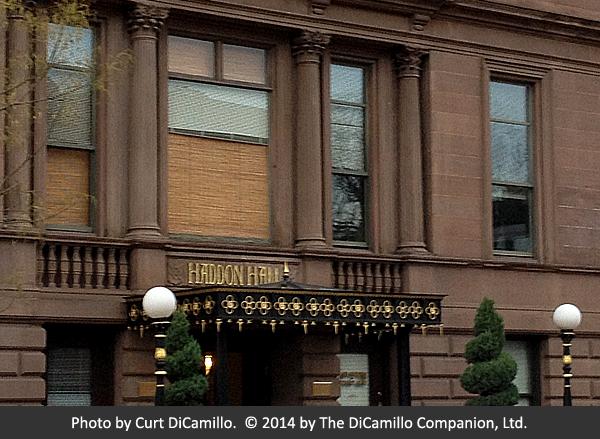
Entrance to Haddon Hall apartment block in the Back Bay section of Boston
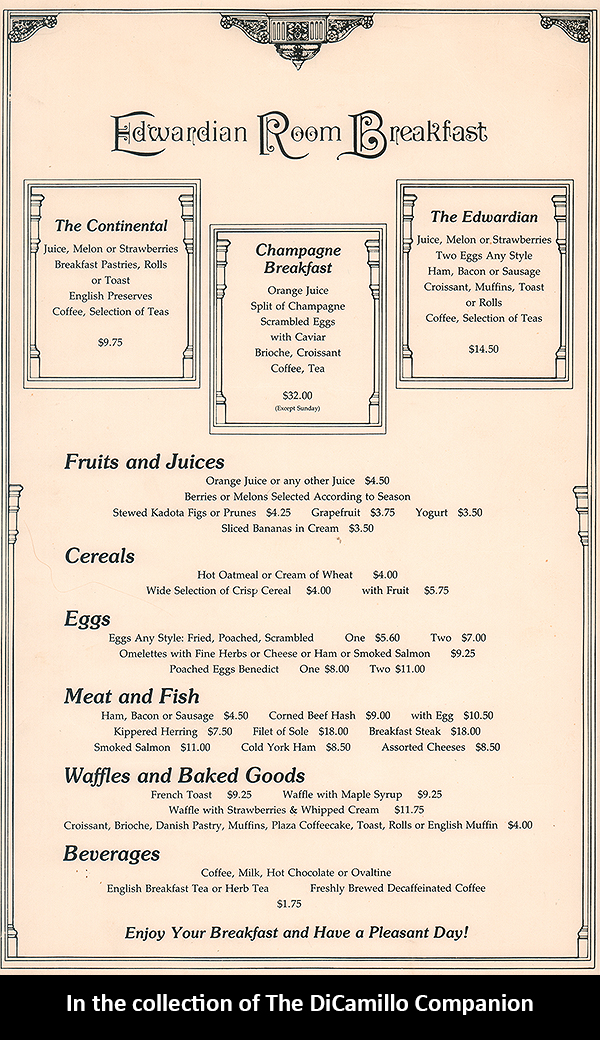
A circa 1977 menu from the Edwardian Room restaurant at the Plaza Hotel, New York City. This room was based on the Banqueting Hall at Haddon.
House & Family History: Haddon is a large house built around a courtyard, with alterations over several centuries. William Peverel, an illegitimate son of William the Conqueror, is the first recorded master of Haddon, when the estate was part of the Domesday manor of Bakewell. Peverel's descendants owned the House for 100 years, before Haddon passed to the Vernon family. Henry VIII's older brother, Arthur, Prince of Wales, was often a guest of the Vernon family at Haddon. Years later, in 1565, when the then-owner, Sir George Vernon (known as "King of ye Peake"), died without male issue, Haddon passed to his daughter Dorothy and her husband, John Manners, (according to legend, Dorothy Vernon fled from the Long Gallery in 1563 during a ball held for the wedding of her sister to elope with John Manners). Thus Haddon passed to the Manners family, later dukes of Rutland, during the late 16th century. The Manners concentrated their resources on, and made their primary seat at, Belvoir Castle, Lincolnshire, and Haddon was left to a slow decay. The House was unoccupied during most the 18th, all of the 19th, and the early part of the 20th centuries. When Horace Walpole visited in 1760 he found the House "totally stript" and abandoned. Haddon was restored by the 9th Duke of Rutland, beginning in 1912 (the restoration was completed by 1927). The earliest parts of Haddon are Peveril's Tower, which, along with parts of the Chapel and the remaining 12-foot boundary walls, date from the late Norman era. The Great Hall was added circa 1370. The kitchens are an extremely important Tudor survival, while the Parlour and Great Chamber to the south of the Great Hall were rebuilt in the late 15th century. Haddon is famous for its Long Gallery, the window panes of which are angled to catch the light in a magical way that casts light around the room. A painting entitled "On the Terrace at Haddon Hall, Derbyshire, 1840" is in the collection of the Yale Center for British Art, New Haven, Connecticut. The Edwardian Room (formerly a restaurant) at the famous Plaza Hotel in New York City was modeled on Haddon's Banqueting Hall.
Collections: The House contains a notable collection of tapestries.
Comments: Because of the preservation work of the 9th Duke of Rutland, Haddon is today considered the best surviving example of a Medieval great house (it has been little altered since the reign of Henry VIII). The House is frequently called the most romantic country house in England.
Garden & Outbuildings: Winner of the HHA/Christie's Garden of the Year Award, 1993. The Haddon Estate is approximately 3,000 acres today.
Chapel & Church: The Chapel is famous for its medieval wall paintings.
John Bernard (J.B.) Burke, published under the title of A Visitation of the Seats and Arms of the Noblemen and Gentlemen of Great Britain and Ireland, among other titles: 2.S. Vol. I, p. 50, 1854.
Country Life: IX, 693, 1901. CVI, 1651, 1742 plan, 1814, 1884, 1949.
Title: How to Read a Country House
Author: Musson, Jeremy
Year Published: 2005
Reference: pg. 7
Publisher: London: Ebury Press
ISBN: 009190076X
Book Type: Hardback
Title: Movie Locations: A Guide to Britain & Ireland
Author: Adams, Mark
Year Published: 2000
Publisher: London: Boxtree
ISBN: 0752271695
Book Type: Softback
House Listed: Grade I
Park Listed: Grade I
Current Seat / Home of: Lord Edward Manners; Manners family here since 1565.
Past Seat / Home of: William Peverel, 11th century; Peverel family here from circa 1087 until 1153. William Avenell, 12th century; Avenell family here (as tenants) from 1153 until 1170. Sir Richard de Vernon, 12th century; Sir Richard Vernon, 15th century; Sir William Vernon, 15th century; Sir Henry Vernon, 16th century; Sir George Vernon, 1517-65; Vernon family here from 1170 until 1565. Sir John Manners, 1565-1611; George Manners, 1611-23; John Manners, 8th Earl of Rutland, 1641-79; John Manners, 1st Duke of Rutland and 9th Earl of Rutland, 1679-1703; Charles Manners, 4th Duke of Rutland, 18th century; John Henry Montagu Manners, 9th Duke of Rutland, 1913-40; Charles John Robert Manners, 10th Duke of Rutland, 1940-99.
Current Ownership Type: Individual / Family Trust
Primary Current Ownership Use: Private Home
House Open to Public: Yes
Phone: 01629-812-855
Fax: 01629-814-379
Email: [email protected]
Website: http://www.haddonhall.co.uk
Awards: Christie's/HHA Garden of the Year Award 1993.
Historic Houses Member: Yes